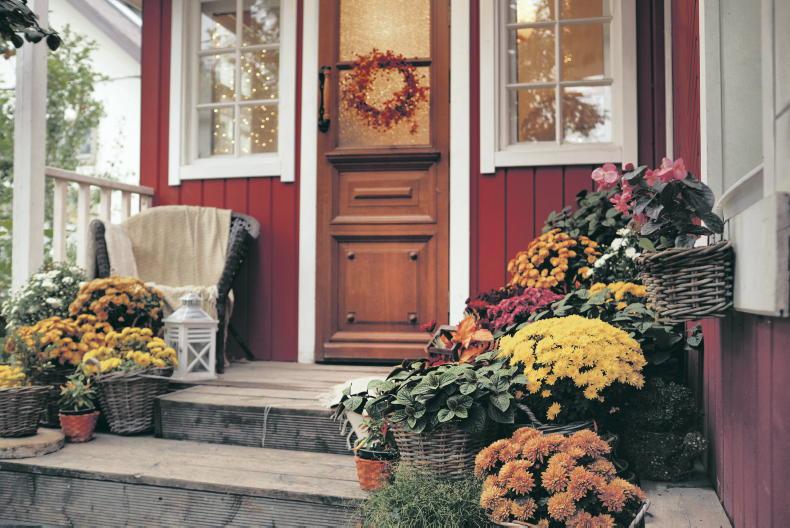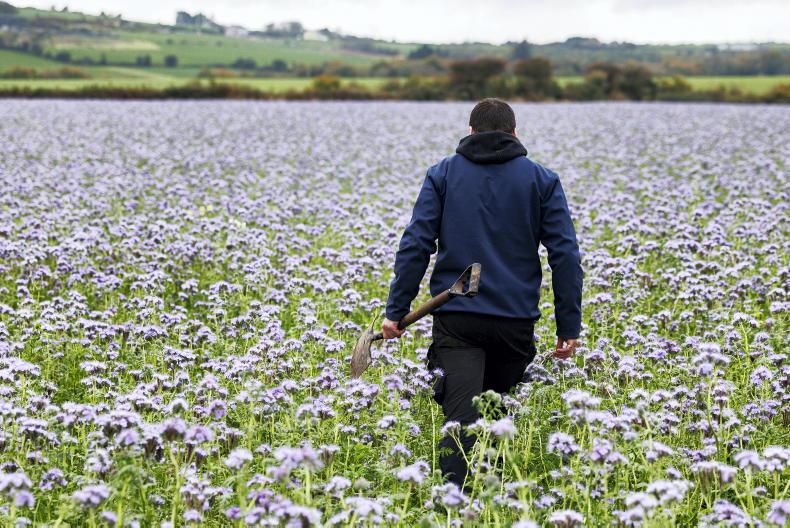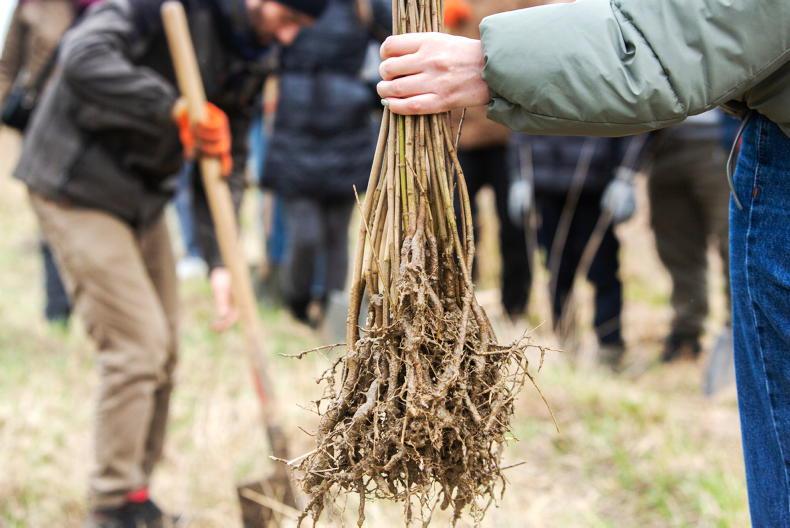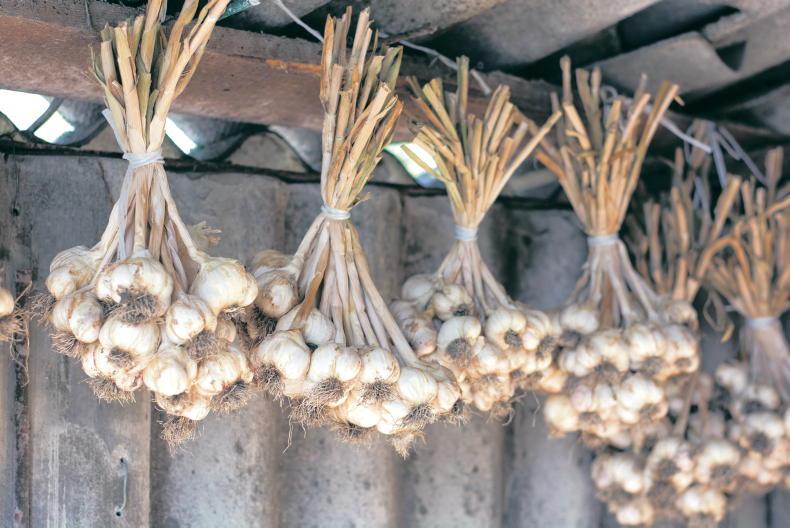After the glorious sunshine last month, we are all eagerly anticipating May and many more months of sunshine with multiple garden-fresh meals alfresco.
Freshly snipped herbs are the ideal companion to this seasonal lifestyle as few plants compare to them when it comes to delivering high impact in a confined space.
Herbs are generous, aromatic plants that add flavour to every meal and scent the air with their natural perfume. Rich in essential oils and bursting with fragrance, their leaves and flowers have the power to transform the most simple meal.
Whether you’re soothing a cold or mixing up the perfect Friday night mojito, herbs prove their usefulness far beyond being a mere garnish.
The term ‘herb’ refers to any plant or plant part valued for its medicinal, savoury or aromatic qualities. This definition covers an incredibly diverse range of plants, coming in all shapes, sizes, colours and fragrances.
For those with plenty of space, an outdoor herb bed is a productive and beautiful way to grow a wide selection but keeping it close to the kitchen makes good sense. If space or time is limited, container growing is a brilliant solution, perfect for balconies, patios or kitchen windows. Although many of our most-loved herbs originate in the Mediterranean, most are surprisingly hardy and will thrive even in the unpredictable Irish climate.
Herb growing tips
Most herbs love sunshine and demand free-draining soil, so improve heavy soil with added grit or sand. While container herbs need regular watering, take care not to overdo it. The secret to a thriving herb garden is simple – harvest little and often to encourage healthy new growth and extend the life of your plants.
Annual herbs are those that complete their entire life cycle within a single growing season. They’re best grown from seed, though if that’s not feasible, look for Irish-grown potted plants. Be wary of supermarket herb pots as they’re usually intended for short-term use and often die quickly, which can unfairly discourage new growers. Annual herbs are fast-growing, full of flavour, and incredibly satisfying. Here are a few favourites.
Basil (Ocimum basilicum): Basil craves warmth and sunlight, so grow in a glasshouse or polytunnel or in pots that can be moved to a sunny location. Avoid cold, wet soil conditions by ensuring excellent drainage. Harvest by regularly pinching out growing tips to encourage bushy growth and delay flowering. Basil is central to Italian cooking, perfect in tomato dishes, fresh salads and homemade pesto.
Coriander (Coriandrum sativum): Quick to grow and quick to bolt in warm conditions, coriander is best sown in succession, avoiding mid-summer heat. This versatile herb thrives in our cooler climate and offers remarkable value as its leaves, stems, roots, flowers and both green and dried seeds are all edible. By selecting appropriate sowing times and using all it’s parts, it’s possible to enjoy coriander nearly year-round.
Parsley (Petroselinum crispum): Although technically a biennial, parsley is usually grown as an annual in Ireland. It thrives in rich, moist soil and partial sun, making it ideal for both pots and beds. There are two main types: curly and flat-leaf (Italian), with the latter offering stronger flavour. Use it liberally in sauces, soups, salads and as a vibrant garnish.
Perennial herbs return year after year, offering excellent value and convenience to gardeners and home cooks. Some are herbaceous, dying back in winter, while others are evergreen, providing year-round interest and harvests. Purchasing them as potted plants is smart, as they can be propagated by division or cuttings in future seasons. Here are a few classics:
Chives (Allium schoenoprasum): Easy to grow in borders or containers, chives enjoy sunny spots and moist, fertile soil. Their mild onion flavour complements eggs, soups and soft cheeses. Their edible purple flowers are both ornamental and delicious, perfect for brightening up summer salads. Cut back to the ground when finished flowering and enjoy a second flush of growth.
Mint (Mentha spp.): There are many mint varieties but all are vigorous spreaders and best grown in containers to keep them contained. Mint prefers partial shade and moist soil. Spearmint is a good all-round mint, commonly used in cooking and teas. Cut back in summer for a second flush and dry excess leaves for winter use. Mint pairs well with lamb, new potatoes, peas and summer cocktails.
Rosemary (Salvia rosmarinus): An evergreen shrub with pale blue spring flowers, rosemary loves a sunny, well-drained location. Once established, it tolerates drought and offers year-round sprigs. Though hardy, it may need protection in colder regions. Upright and trailing varieties suit both beds and pots. Use rosemary in roasts, infused oils and savoury bakes. Its robust leaves retain flavour both fresh and dried.
Whether you have acres of land or a small garden, growing culinary herbs is a deeply rewarding pursuit. They won’t just elevate your cooking but will also lift your spirits by effortlessly adding colour, texture and a multi-sensory experience. Better still, many herbs attract beneficial insects, making them an ecologically sound addition to your planting scheme.
Q: How do I harden off indoor seedlings?

Gradually introduce herbs to outdoor life.
I started seedlings indoors in April and they are thriving, but how do I safely transition them to outdoor conditions without stunting their growth? - Niamh, Trim, Co Meath
Seedlings need to be hardened off by gradually introducing them to outdoor life over five to seven days. Begin by placing them outside for a few hours daily in a wind-free spot, such as a cold frame or beneath a cloche. Slowly increase exposure time, eventually leaving them out overnight.
Grouping pots in crates or tubs helps transport them easily. Keep an eye on watering, as seedlings dry out faster as their roots grow. Bottom soaking is a reliable method of hydration. Simply place pots in trays of water so they absorb moisture from below, ensuring the roots remain moist during this transition.
You can grow almost anything in a polytunnel and planning is very important.
Module/tray sowings for transplanting in polytunnel: Cucumber, melon, French beans, basil.
Module/tray sowing for transplanting outdoors next month: Amaranth, Brussels sprouts, cabbage, calabrese, cauliflower, celery, chard, courgette, parsley, squash, sweetcorn, winter leeks.
After the glorious sunshine last month, we are all eagerly anticipating May and many more months of sunshine with multiple garden-fresh meals alfresco.
Freshly snipped herbs are the ideal companion to this seasonal lifestyle as few plants compare to them when it comes to delivering high impact in a confined space.
Herbs are generous, aromatic plants that add flavour to every meal and scent the air with their natural perfume. Rich in essential oils and bursting with fragrance, their leaves and flowers have the power to transform the most simple meal.
Whether you’re soothing a cold or mixing up the perfect Friday night mojito, herbs prove their usefulness far beyond being a mere garnish.
The term ‘herb’ refers to any plant or plant part valued for its medicinal, savoury or aromatic qualities. This definition covers an incredibly diverse range of plants, coming in all shapes, sizes, colours and fragrances.
For those with plenty of space, an outdoor herb bed is a productive and beautiful way to grow a wide selection but keeping it close to the kitchen makes good sense. If space or time is limited, container growing is a brilliant solution, perfect for balconies, patios or kitchen windows. Although many of our most-loved herbs originate in the Mediterranean, most are surprisingly hardy and will thrive even in the unpredictable Irish climate.
Herb growing tips
Most herbs love sunshine and demand free-draining soil, so improve heavy soil with added grit or sand. While container herbs need regular watering, take care not to overdo it. The secret to a thriving herb garden is simple – harvest little and often to encourage healthy new growth and extend the life of your plants.
Annual herbs are those that complete their entire life cycle within a single growing season. They’re best grown from seed, though if that’s not feasible, look for Irish-grown potted plants. Be wary of supermarket herb pots as they’re usually intended for short-term use and often die quickly, which can unfairly discourage new growers. Annual herbs are fast-growing, full of flavour, and incredibly satisfying. Here are a few favourites.
Basil (Ocimum basilicum): Basil craves warmth and sunlight, so grow in a glasshouse or polytunnel or in pots that can be moved to a sunny location. Avoid cold, wet soil conditions by ensuring excellent drainage. Harvest by regularly pinching out growing tips to encourage bushy growth and delay flowering. Basil is central to Italian cooking, perfect in tomato dishes, fresh salads and homemade pesto.
Coriander (Coriandrum sativum): Quick to grow and quick to bolt in warm conditions, coriander is best sown in succession, avoiding mid-summer heat. This versatile herb thrives in our cooler climate and offers remarkable value as its leaves, stems, roots, flowers and both green and dried seeds are all edible. By selecting appropriate sowing times and using all it’s parts, it’s possible to enjoy coriander nearly year-round.
Parsley (Petroselinum crispum): Although technically a biennial, parsley is usually grown as an annual in Ireland. It thrives in rich, moist soil and partial sun, making it ideal for both pots and beds. There are two main types: curly and flat-leaf (Italian), with the latter offering stronger flavour. Use it liberally in sauces, soups, salads and as a vibrant garnish.
Perennial herbs return year after year, offering excellent value and convenience to gardeners and home cooks. Some are herbaceous, dying back in winter, while others are evergreen, providing year-round interest and harvests. Purchasing them as potted plants is smart, as they can be propagated by division or cuttings in future seasons. Here are a few classics:
Chives (Allium schoenoprasum): Easy to grow in borders or containers, chives enjoy sunny spots and moist, fertile soil. Their mild onion flavour complements eggs, soups and soft cheeses. Their edible purple flowers are both ornamental and delicious, perfect for brightening up summer salads. Cut back to the ground when finished flowering and enjoy a second flush of growth.
Mint (Mentha spp.): There are many mint varieties but all are vigorous spreaders and best grown in containers to keep them contained. Mint prefers partial shade and moist soil. Spearmint is a good all-round mint, commonly used in cooking and teas. Cut back in summer for a second flush and dry excess leaves for winter use. Mint pairs well with lamb, new potatoes, peas and summer cocktails.
Rosemary (Salvia rosmarinus): An evergreen shrub with pale blue spring flowers, rosemary loves a sunny, well-drained location. Once established, it tolerates drought and offers year-round sprigs. Though hardy, it may need protection in colder regions. Upright and trailing varieties suit both beds and pots. Use rosemary in roasts, infused oils and savoury bakes. Its robust leaves retain flavour both fresh and dried.
Whether you have acres of land or a small garden, growing culinary herbs is a deeply rewarding pursuit. They won’t just elevate your cooking but will also lift your spirits by effortlessly adding colour, texture and a multi-sensory experience. Better still, many herbs attract beneficial insects, making them an ecologically sound addition to your planting scheme.
Q: How do I harden off indoor seedlings?

Gradually introduce herbs to outdoor life.
I started seedlings indoors in April and they are thriving, but how do I safely transition them to outdoor conditions without stunting their growth? - Niamh, Trim, Co Meath
Seedlings need to be hardened off by gradually introducing them to outdoor life over five to seven days. Begin by placing them outside for a few hours daily in a wind-free spot, such as a cold frame or beneath a cloche. Slowly increase exposure time, eventually leaving them out overnight.
Grouping pots in crates or tubs helps transport them easily. Keep an eye on watering, as seedlings dry out faster as their roots grow. Bottom soaking is a reliable method of hydration. Simply place pots in trays of water so they absorb moisture from below, ensuring the roots remain moist during this transition.
You can grow almost anything in a polytunnel and planning is very important.
Module/tray sowings for transplanting in polytunnel: Cucumber, melon, French beans, basil.
Module/tray sowing for transplanting outdoors next month: Amaranth, Brussels sprouts, cabbage, calabrese, cauliflower, celery, chard, courgette, parsley, squash, sweetcorn, winter leeks.










SHARING OPTIONS